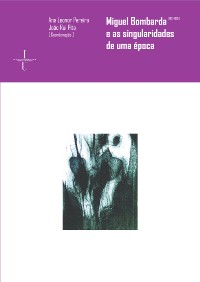Please use this identifier to cite or link to this item:
https://hdl.handle.net/10316.2/32293| Title: | Cajal y la institucionalizacion de la ciência en España (1854-1934) | Authors: | Riera, Juan | Issue Date: | 2006 | Publisher: | Imprensa da Universidade de Coimbra | Journal: | http://hdl.handle.net/10316.2/2561 | Abstract: | After the crisis of the first half of the nineteenth century, which was due to Napoleonic
wars, Spanish science clearly began to recover owing to a better social and political atmosphere by the end
of the century. The so-called ‘generation of sages’, headed by Ramón y Cajal (1852-1934) was responsible
for the incorporation of movements of experimental positivism in our country. Ramón y Cajal belonged
to a generation of scientists that began their activity in the beginning of the nineteenth century, renewing
research methods and establishing the basis for the institutionalisation of science in Spain.
This process of affirmation of science brilliantly culminated in the first third of the twentieth century.
During this stage of Spanish scientific life, the great institutions were formed. In the first place, Junta para
la Ampliación de Estudios was created in 1907 and inherited the spirit of the old Institución Libre de
Enseñanza (1874). Along with this ‘Junta’ other institutions such as Residencia de Estudiantes (Madrid) carried out the internationalisation of Spanish science and its incorporation in universal scientific thought.
Likewise the Instituto de Estudios Catalanes in Barcelona and Sociedad de Estudios Vascos in San Sebastián
testifiy the progress achieved in this area.
In this brilliant panorama, the most universal figure – Santiago Ramón y Cajal – excels owing to his discoveries and to the creation of a brilliant Spanish school of histology A ciência espanhola, após o afundamento da primeira metade do século xix devido às guerras napoleónicas, principiou uma clara recuperação em finais da centúria graças ao melhor clima social e político. Deve-se à chamada «geração de sábios», encabeçada por Ramón y Cajal (1852-1934), a incorporação do nosso país nas correntes do positivismo experimental. A geração de homens de ciência à qual pertence Ramón y Cajal iniciava o seu labor por volta de 1880, renovando os métodos de investigação e estabelecendo as bases da institucionalização da ciência em Espanha. Este processo de afirmação culminou, de forma brilhante, no primeiro terço do século xx. Nesta etapa da vida científica espanhola formaram-se as grandes instituições. Em primeiro lugar, a Junta para la Ampliación de Estudios, criada em 1907, e herdeira do espírito da antiga Institución Libre de Enseñanza (1874). Além da «Junta», outras instituições como a Residencia de Estudiantes (Madrid), levaram a cabo a internacionalização da ciência espanhola e a sua incorporação no pensamento científico universal. De forma paralela, o Instituto de Estudios Catalane, em Barcelona, e a Sociedad de Estudios Vascos, em San Sebastián, testemunham os progressos realizados. Neste brilhante panorama destaca-se a figura mais universal que é Santiago Ramón y Cajal, pelas suas descobertas e pela criação duma brilhante escola espanhola de histologia |
URI: | https://hdl.handle.net/10316.2/32293 | ISBN: | 978-989-26-0362-9 (PDF) | DOI: | 10.14195/978-989-26-0362-9_2 | Rights: | open access |
| Appears in Collections: | Miguel Bombarda e as singularidades de uma época: 1851-1910 |
Files in This Item:
| File | Description | Size | Format | |
|---|---|---|---|---|
| miguel_bombarda_e_singularidades_de_uma__poca__2006__riera.pdf | 998.9 kB | Adobe PDF |  |
Items in DSpace are protected by copyright, with all rights reserved, unless otherwise indicated.
